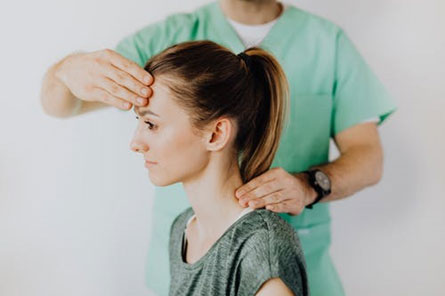Never Ignore Head Injuries
Accidental Head Injuries
Head injuries are among the most common types of injuries that occur. A slight impact that results in a small bump or tenderness to a portion of the head is usually not a serious matter. However, a more serious injury can lead to very severe complications if it is not examined and treated without delay. The problem is that the symptoms of a serious head injury may not appear immediately. It could be hours or even days before the patient begins to feel the effects of the injury, by which time the condition may have become worse, requiring more aggressive treatment and a longer recovery period. Understanding the type and nature of accidental head injuries will enable those who have suffered them to find the right course of action and treatment.

Types of Head Injuries
An accidental head injury is defined as any trauma to the scalp, head or brain. The type of trauma may range from a small bump to brain injury. Head injuries are of two types:
• Close head injuries are those that result from the head striking a hard object with force, but the skull is not broken.
• Open or penetrating head injuries are those that are caused by an impact that breaks the skull and a bone or a foreign object enters the brain.
Head injuries may result in the following
• A concussion which is when the brain is shaken up within its normal space in the skull. These are among the most common types of traumatic head injuries.
• Scalp wounds where the skin is broken and bleeding (often excessive) occurs. These may look bad, but are typically not as serious as concussions.
• A skull fracture which may result in life threatening issues, especially if not treated in time.
Causes
Any impact on or to the head could cause a head injury. The most common causes include:
• Accidents while playing games, working outdoors or in the house or office
• Falling
• Traffic accidents (both for drivers as well as passengers)
• Physical assault when one person causes serious injury to another
Precautions
When a person suffers a serious accidental head injury, do not attempt the following:
• Wash a deep or heavily bleeding wound
• Remove any object that has entered the scalp or skull
• Move the person unless absolutely necessary
• Shake or try to wake up a person who appears to be dazed or confused
• Remove any helmet or protective head gear that the person is wearing
• Do not give the person any stimulants – alcohol, tobacco, drugs, etc.
The best thing to do would be to get immediate emergency medical attention for the patient.
Do Not Take Chances with Accidental Head Injuries
A mild head injury that causes no physical or cognitive reaction usually does not require treatment. However, these should not be ignored and a careful watch should be maintained for any symptoms that may show up later.
However, if the injured person is exhibiting any of the following, medical attention should be provided without delay:
• Patient displays severe bleeding
• Feels confused or tired
• Patient is unconscious
• Patient stops breathing or has difficulty breathing
• Patient is in pain or exhibits abnormal behaviour
In these cases, the patient should be taken to a hospital that is fully equipped to deal with these kind of injuries where a detail examination may be done, a diagnosis of the nature of the injury given and a course of treatment prescribed and provided.
- Aug 25, 2020
